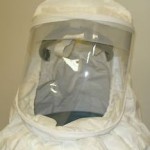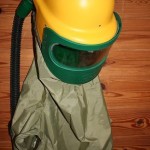There are only a few instances when you are not required to perform fit testing. The main reason not to perform fit testing is if the employees are wearing a respirator voluntary. (meaning: it’s not required)
So, how do you know if it’s required? It’s required when:
- You have overexposures to a substance (it’s required by OSHA to wear a respirator- so make sure you know, perform air monitoring), or
- If everyone is wearing a respirator during this task (it’s probably also required, just not formally- ie. spray finishing, or my favorite sanding drywall dust) or,
- If your company policy requires them to be worn (management says: it’s required to wearing a respirator during this task).
So, if you choose voluntary to wear a respirator and there is NOT a policy, or law, that says you HAVE to wear one then, you don’t need fit testing. (but you do need a few other things, Appendix D, etc.)
There is only one other exception:
- loose fitting hooded /helmet atmosphere supply respirators (when used in areas not immediately dangerous to life and health (IDLH))
Some employers choose to use these types of respirators because:
- the employee wears a beard
- it is convenient to use
- offers eye/face/neck protection
- it offers a greater protection factor
- it’s easier to don/doff (take on/off)
These guidelines for fit testing are different than medial testing before wearing a respirator, as spoken about here.
